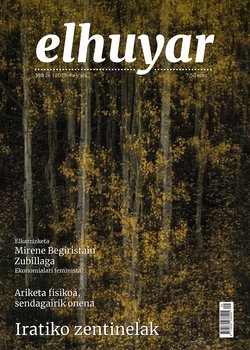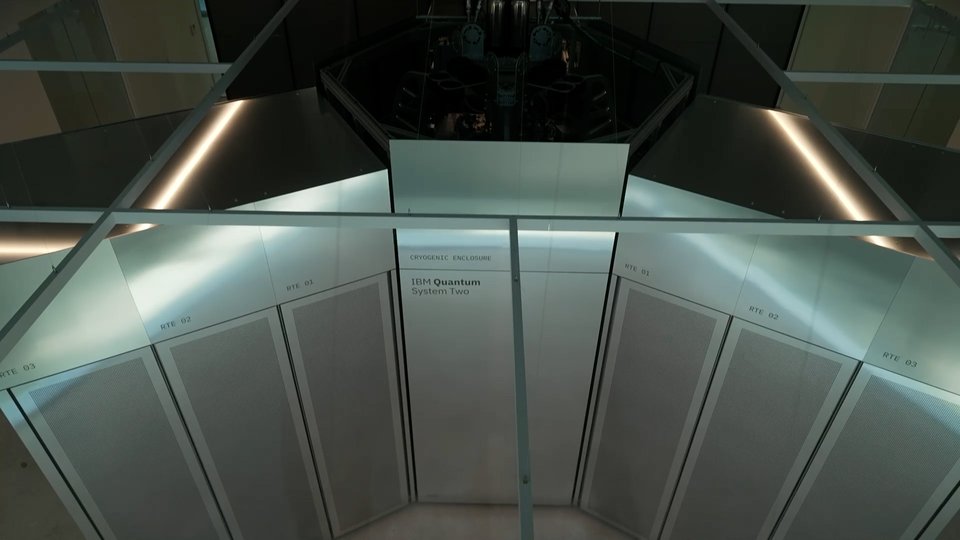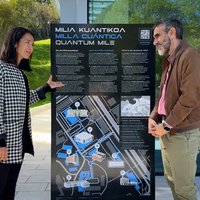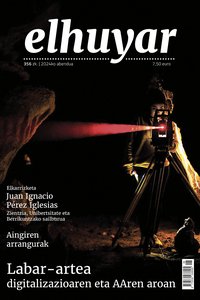The last dinosaur
The village of Aren in Huesca, very close to the border of Lleida. a 10-year excavation reveals that 250 million years ago dinosaurs ruled here.
Dinosaurs ruled the world for 186 million years. According to the main hypothesis, its decline was due to a meteorite that fell in the Gulf of Mexico and disappeared 65 million years ago. The dinosaur
bones found in Arena date back to that time.
Different specimens have been detected at the Blasi site, the last one named Blasisaurus Canudoi. After the studies, the experts say that it was the most modern dinosaur in Europe, that is, one of the last to live before the extinction.
Researchers from different places have been involved in the excavations, including the Xabier Pereda Suberbiola of the UPV/EHU.
Grey sandstone has been the refuge of dinosaur bones in the Blasi 1 Pit for the past 66 million years. The hardness of the rock increased the difficulties and they had to work hard to recover the bones. In order to
be able to get out, paleontologists had to do the work of butchers.
JOSÉ IGNACIO RUIS-OMEÑACA; Museum of the Asturian Jurassic: The rock is very hard in this pit and to work we had to use the radial drilling machine, the tools of the rocks. We made parallel cuts, surrounding the bone. Then we took the rocks out of the chisels. Finally, we put the chisels underneath and pulled out the entire piece of rock that contained the bone.
On the hard stone, you can only see a section of the bone that is distinguished by its color, and they had to work blindly on the excavation of the Arena. The
effort was worth it, since the pieces obtained belonged to a new species.
JOSÉ IGNACIO RUIS-OMEÑACA; Museum of the Asturian Jurassic: We exhumed Blasi 1, the Blasisaurus Canudoi dinosaur we found last year. The first fingerprint we found was a part of the jaw, specifically the left jaw. It's a dense bone. When we took it out, we saw that the bone was intact; it had all the teeth, and under that bone we found another bone of the face, the jugal bone. We got that in the '97 campaign as well. We noticed that several of the other bones we found in the area belonged to identical animals. In total, we found 5 bones of the head.
The first bone dating track was provided by the pit stone itself.
JOSÉ IGNACIO RUIS-OMEÑACA; Museum of the Asturian Jurassic: The study of ferromagnetic minerals has given us the most accurate data. The Earth's North Pole moves for millions of years, and magnetic minerals orient themselves towards the North Pole. By investigating the orientation of the minerals inside the rock, in different rocks and in a sequence, we can find out at what time we were. This is the highest precision we can achieve. We're
at the end of the Cretaceous, 66.5 - 68.5 million years ago.
Once the stones containing the bones were extracted, they were taken to the laboratory of the University of Zaragoza for a more refined work. To remove the bones from the stone, they use knocking and turning tools.
Little by little, the first pieces were revealed. Most importantly, the mandible. This was the first feature of the dinosaur. The blasisaurus was five meters from end to tail, weighed 400-500 kilos, belonged to the hadrosaurian group, and was herbivorous.
PENÉLOPE CRUZADO; University of Zaragoza: He's a herbivore. These teeth are blunt, made to crush, not cut. Carnivores have knives similar to meat cutting knives, flattened, curved and serrated.
United by all the bones found, they get an image of their appearance. The blasisaurus had about 1,000 teeth, three for each position, and had a crest on its head, as did the hadrosaurians.
PENÉLOPE CRUZADO; University of Zaragoza: They were meant to create sounds. These ridges grew beyond the head with the extension of the bones of the nose, and contained tubes through which the wind could pass. The wind echoed inside and sounded. These sounds were to warn friends of the danger, or to distinguish between males and females, or to attract females in the harem. It is believed that each species had its own sound.
After all the studies, the experts assure that we are facing a new species of dinosaurs.
The fossil record in Europe has increased considerably in recent years, but the fossils in Arena have brought more details about the latest species of dinosaurs. Another Blasisaurus, Arenisaurus, was discovered a few months earlier.
XABIER PEREDA SUBERBIOLA; UPV/EHU: Analyzing the kinship relationships between Blasisaurus and Arenisaurus, we found that they were related to Asian dinosaurs and we concluded that they belong to the same family. It originated in Asia and spread throughout Europe at a time of the High Cretaceous.
We know that in Europe, 70 million years ago or just before, herbivorous dinosaurs depended on a group called raptodontides. There were also titanosaurs within the sauropods. And there was a change in the fauna. About 68 million years ago, there was a diversification of hadrosaurs. These were the dominant ones, at least in Europe, until the end of the Cretaceous. Therefore, this group was diversified. And we have discovered several of their species in recent years (two of them, in Arene).
Hadrosaurians aren't the only bones found in Arena's pits. Pteropods, sauropods and the bones of a crocodile currently under investigation have also been detected. The teams that go to perform paleontological surveys often find new remains, but for the moment the
excavations will not continue until all the pieces they have in the laboratory have been cleaned and investigated.
Buletina
Bidali zure helbide elektronikoa eta jaso asteroko buletina zure sarrera-ontzian










